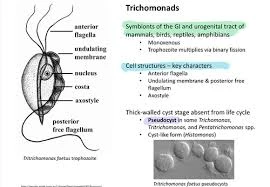
أغسطس . 05, 2024 17:04 Back to list
Understanding the Bactericidal and Bacteriostatic Properties of Cephalosporins in Clinical Applications
Cephalosporins Bacteriostatic or Bactericidal?
Cephalosporins are a group of antibiotics that play a crucial role in the treatment of bacterial infections. They belong to the beta-lactam class of antibiotics and are structurally and pharmacologically related to penicillins. Since their introduction in the mid-20th century, cephalosporins have evolved through several generations, each demonstrating varying spectra of activity against different types of bacteria. A common question surrounding these antibiotics is whether they are bacteriostatic or bactericidal in their action.
The terms bacteriostatic and bactericidal describe how an antibiotic affects bacteria. Bacteriostatic agents inhibit the growth and reproduction of bacteria, effectively slowing down the infection to allow the immune system to eliminate the pathogens. On the other hand, bactericidal agents kill bacteria directly, providing a more aggressive approach to eliminating the infection.
Cephalosporins are generally classified as bactericidal agents. They exert their antibacterial effects primarily by interfering with bacterial cell wall synthesis. The bacteria are incapable of maintaining their structural integrity, leading to cell lysis and ultimately death. This mode of action is similar to that of penicillin and is due to the binding of cephalosporins to penicillin-binding proteins (PBPs) located within the bacterial cell membrane. When PBPs are inhibited, the bacteria cannot properly cross-link the peptidoglycan layers of their cell walls, causing them to become osmotic-labile and ultimately succumb to lysis.
cephalosporins bacteriostatic or bactericidal factory

The bactericidal nature of cephalosporins makes them particularly effective in treating serious infections, especially in patients who are immunocompromised or have a higher risk of complications. For instance, cephalosporins are often used in the management of conditions such as meningitis, septicemia, and severe pneumonia, where rapid bacterial eradication is critical.
Despite their primarily bactericidal action, some studies suggest that the bacteriostatic or bactericidal nature of cephalosporins might vary depending on specific bacteria and the concentration of the drug. For example, at lower concentrations, certain cephalosporins may exhibit bacteriostatic activity against some strains of Escherichia coli and Staphylococcus aureus. However, as the concentration of the drug increases, the bactericidal effect becomes more pronounced. This phenomenon highlights the importance of using cephalosporins at appropriate dosing levels to ensure their efficacy.
The evolution of cephalosporins through several generations also adds to the complexity of their action. First-generation cephalosporins, such as cephalexin and cefazolin, are primarily effective against gram-positive bacteria, while later generations, like ceftriaxone and cefepime, have enhanced activity against gram-negative organisms. This broadened spectrum can influence the classification of an antibiotic as bacteriostatic or bactericidal based on the type of bacteria being targeted.
In conclusion, cephalosporins are predominantly bactericidal antibiotics that effectively kill bacteria by disrupting cell wall synthesis. Their ability to eradicate pathogens makes them essential in treating various bacterial infections. However, the interplay between dosage, bacterial strain, and generation of cephalosporins can influence their bacteriostatic or bactericidal effects. Understanding these nuances is vital for clinicians to optimize antibiotic therapy and improve patient outcomes in the fight against bacterial infections.
-
Top Hemoglobinuria Manufacturer & Supplier Reliable Hemoglobinuria Factory Solutions
NewsJun.24,2025
-
Premium Honeysuckle Products - Leading Honeysuckle Manufacturer & Supplier Factory
NewsJun.10,2025
-
Pulmonary Edema Solutions from Leading Manufacturer & Supplier Reliable Factory Price
NewsJun.10,2025
-
Red Eyes - Leading Red Eyes Manufacturer & Supplier, Premium Quality Factory Price
NewsJun.10,2025
-
Broiler Ascites Syndrome Solutions Top Manufacturers
NewsJun.10,2025
-
Premium Amoxicillin Suppliers Reliable Biomox Mexican Factories
NewsJun.10,2025




